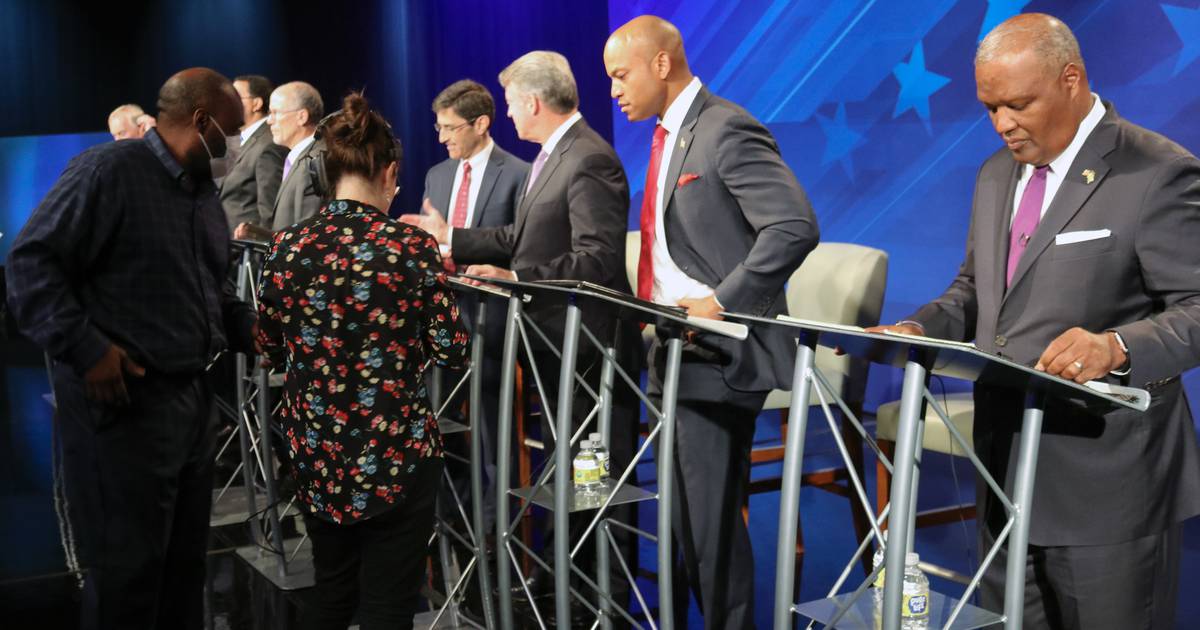| Baltimore Sun Editorial Board | Baltimore Sun |
One of the more unusual circumstances of Maryland’s primary election this year was the crowded race in the Democratic primary for governor featuring 10 slates of candidates. Wes Moore and his lieutenant governor running mate Aruna Miller have been recognized as winners with almost exactly one-third of the vote. But what if matters had gone quite differently? What if the 10 governor/lieutenant governor teams had split the vote more evenly and the winners received just 15% of the total or less? How would the 85% of Democrats who cast their ballots for candidates other than the top vote-getters feel about that?
That possibility is just one of the reasons that Maryland should seriously consider a much-debated reform called ranked-choice voting that allows participants to cast ballots not just for their top choice but to indicate their second and third or perhaps more.
”There’s surely something to be said for pushing candidates toward civil debate.
Just two states currently use ranked-choice voting statewide, Alaska and Maine, but more than 50 cities and counties use it, and they vary from Minneapolis to New York City and from Telluride, Colorado, to Berkeley, California. In Maryland, it’s been used in Takoma Park since 2007. Del. Brooke Lierman, known these days as the Democratic nominee for state comptroller, offered legislation in 2019 to allow for ranked-choice voting in Baltimore’s local races as well as open primaries, meaning voters of any party affiliation could cast ballots in the primary of their choice as opposed to the current “closed” primaries where only voters registered to a given party can vote in that party’s primary. She later withdrew the measure in the face of opposition from her fellow city delegates.
Open primaries make some party-loyal politicians nervous (although members of the Baltimore City Council requested the power from the General Assembly to create such a system in 2016), but ranked-choice should actually be easier to swallow. Besides helping sort out crowded fields, the system is thought to promote some measure of civility to elections. After all, candidates who are too aggressive in attacking opponents might find themselves lacking crucial second or third level votes they’ll need in a close race. Conversely, it gives voters a far greater sense of purpose and importance. If their top pick didn’t win, perhaps their second pick did, and that’s something of a consolation prize. It also seems much more practical than runoff elections.
Granted, only two states now use the system. And it’s fair to note that a lot of municipalities that use it today have nonpartisan elections so it’s perhaps easier to rank candidates under less polarized circumstances than one often sees in partisan general elections. But we’ve seen initial reluctance to election reforms before, most recently in public campaign financing, and yet they’ve moved forward with positive results.
Again, the Moore ticket’s legitimacy is assured this time around, but we can’t help but worry that one day a large field of candidates for governor or other high office will produce less clear-cut results. And it’s not exactly a completely new idea. As the National Conference of State Legislatures reports , it’s been in use at the municipal level since the 1920s, and at least 14 states have considered adopting it. It may not appeal to party insiders and strategists accustomed to the status quo, but there’s surely something to be said for pushing candidates toward civil debate, and not scorched earth tactics, as the surest path to victory — and for having an undisputed winner at the end.





